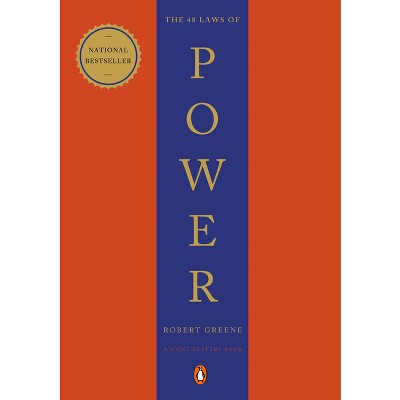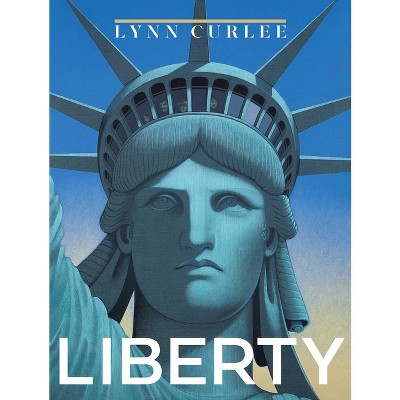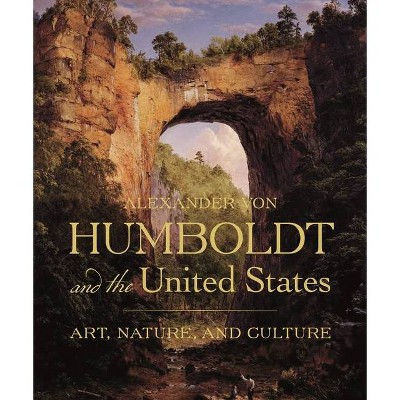Sponsored

Liberty's Grid - by Amir Alexander (Hardcover)
$30.00
In Stock
Eligible for registries and wish lists
Sponsored
About this item
Highlights
- The surprising history behind a ubiquitous facet of the United States: the gridded landscape.
- About the Author: Amir Alexander teaches history at the University of California, Los Angeles.
- 304 Pages
- Science, History
Description
About the Book
From the halls of Congress to the open prairies, and from the fight against George III to the Trail of Tears, Liberty's Grid tells the story of the continuing battle between grid-makers and their opponents. On the one side are the rectilinear streets of Manhattan and the squared corn fields of Kansas, on the other the curvy paths of Central Park and the cliffs of Yosemite Valley. To grid creators, America appears a land of limitless freedom; to those beholden to the rhythms of nature and history, the naturalistic is an escape from moral collapse. Their conflict, Alexander shows, is written on our landscape.Book Synopsis
The surprising history behind a ubiquitous facet of the United States: the gridded landscape. Seen from an airplane, much of the United States appears to be a gridded land of startling uniformity. Perpendicular streets and rectangular fields, all precisely measured and perfectly aligned, turn both urban and rural America into a checkerboard landscape that stretches from horizon to horizon. In evidence throughout the country, but especially the West, the pattern is a hallmark of American life. One might consider it an administrative convenience--an easy way to divide land and lay down streets--but it is not. The colossal grid carved into the North American continent, argues historian and writer Amir Alexander, is a plan redolent with philosophical and political meaning. In 1784 Thomas Jefferson presented Congress with an audacious scheme to reshape the territory of the young United States. All western lands, he proposed, would be inscribed with a single rectilinear grid, transforming the natural landscape into a mathematical one. Following Isaac Newton and John Locke, he viewed mathematical space as a blank slate on which anything is possible and where new Americans, acting freely, could find liberty. And if the real America, with its diverse landscapes and rich human history, did not match his vision, then it must be made to match it. From the halls of Congress to the open prairies, and from the fight against George III to the Trail of Tears, Liberty's Grid tells the story of the battle between grid makers and their opponents. When Congress endorsed Jefferson's plan, it set off a struggle over American space that has not subsided. Transcendentalists, urban reformers, and conservationists saw the grid not as a place of possibility but as an artificial imposition that crushed the human spirit. Today, the ideas Jefferson associated with the grid still echo through political rhetoric about the country's founding, and competing visions for the nation are visible from Manhattan avenues and Kansan pastures to Yosemite's cliffs and suburbia's cul-de-sacs. An engrossing read, Liberty's Grid offers a powerful look at the ideological conflict written on the landscape.Review Quotes
"Two thirds of the continental United States has been surveyed and platted in accordance with Jefferson's idea for uniform geometric subdivision of the public lands. Thanks to Liberty's Grid, we now have a fuller idea of why this happened and what it means." -- "The Portolan"
"Despite being a book about straight lines, Liberty's Grid includes fascinating detours--from Jefferson's proposals for a metric system, to his suggestions for names of new states: Sylvania, Cherronesus, Assenisipia, Metropotamia."-- "History Today"
"A deeply informed and illuminating look at something so familiar as to be almost invisible, and a wonderful cautionary tale of the havoc that a brilliant man like Jefferson can wreak out of misplaced idealism and a 'habit of thinking in broad abstractions rather than getting bogged down in practical details.'"-- "Wall Street Journal"
"Alexanderʼs entertaining survey of this long-forgotten but once heated debate probes at the weird ways science and politics intersect. Readers will be utterly engrossed."-- "Publisher's Weekly"
"In this beautifully written book, Alexander takes on a seemingly obvious feature of American life: the open-ended, uniform grid that organizes much of the national space from Manhattan to the Western plains. But why did America became rectilinear? Alexander shows how, far from being a simple solution to practical problems, the Great American Grid embodies a distinct vision of the land and its people. In eighteenth-century America, the analytic logic of the grid became the logic of an empty, undifferentiated space ready to be colonized and exploited--a boundless space of unlimited possibilities. But other ways of perceiving and organizing space were and are possible. Alexander recounts the fascinating story of the grid--and of those who opposed it--as an ongoing story of geometrical forms and political possibilities." --Massimo Mazzotti, author of Reactionary Mathematics: A Genealogy of Purity
"Liberty's Grid draws a startling connection between the American love of rectilinear layout and philosophical ideas about America itself--the landscape as the graph paper our national identity is scribbled on. You'll never look at Manhattan the same way again."--Jordan Ellenberg, author of Shape: The Hidden Geometry of Information, Biology, Strategy, Democracy, and Everything Else
"This book opens an entirely unexpected window on the cultural history of mathematics and the role of mathematics in American history and culture. A highly rewarding read for mathematicians, historians and philosophers of mathematics, cultural historians, Americanists, and those who are interested in these subjects."--Arkady Plotnitsky, author of Logos and Alogon: Thinkable and the Unthinkable in Mathematics, from the Pythagoreans to the Moderns
"Alexander's important new book illuminates the geometrical premises and ideological implications of westward expansion and urban development, offering fresh perspectives on the conflicting and controversial ways Americans imagined their future and transformed the continent. Liberty's Grid will provoke and inform ongoing debates about the pathways we are following--and the history we are inscribing--on our national landscape."--Peter S. Onuf, author of Jefferson's Empire: The Language of American Nationhood
"Anyone interested in the history or the geography of the United States will welcome Alexander's novel perspective on the westward expansion of the US. Alexander's emphasis on the geometry of the development of the landscape makes this compulsively readable book a necessary contribution to the literature of Indigenous resistance."--Michael Harris, author of Mathematics without Apologies: Portrait of a Problematic Vocation
About the Author
Amir Alexander teaches history at the University of California, Los Angeles. His writing has appeared in the New York Times, Wall Street Journal, Nature, Washington Post, and Los Angeles Times. He is the author of four books, including Infinitesimal: How a Dangerous Mathematical Theory Shaped the Modern World and Proof! How the World Became Geometrical.Dimensions (Overall): 9.13 Inches (H) x 6.14 Inches (W) x 1.18 Inches (D)
Weight: 1.4 Pounds
Suggested Age: 22 Years and Up
Number of Pages: 304
Genre: Science
Sub-Genre: History
Publisher: University of Chicago Press
Format: Hardcover
Author: Amir Alexander
Language: English
Street Date: May 29, 2024
TCIN: 1006100767
UPC: 9780226820729
Item Number (DPCI): 247-50-0795
Origin: Made in the USA or Imported
If the item details aren’t accurate or complete, we want to know about it.
Shipping details
Estimated ship dimensions: 1.18 inches length x 6.14 inches width x 9.13 inches height
Estimated ship weight: 1.4 pounds
We regret that this item cannot be shipped to PO Boxes.
This item cannot be shipped to the following locations: American Samoa (see also separate entry under AS), Guam (see also separate entry under GU), Northern Mariana Islands, Puerto Rico (see also separate entry under PR), United States Minor Outlying Islands, Virgin Islands, U.S., APO/FPO
Return details
This item can be returned to any Target store or Target.com.
This item must be returned within 90 days of the date it was purchased in store, shipped, delivered by a Shipt shopper, or made ready for pickup.
See the return policy for complete information.
Frequently bought together
Guests also viewed

$13.99 - $30.40
MSRP $25.00 - $40.00
4.4 out of 5 stars with 200 ratings

















